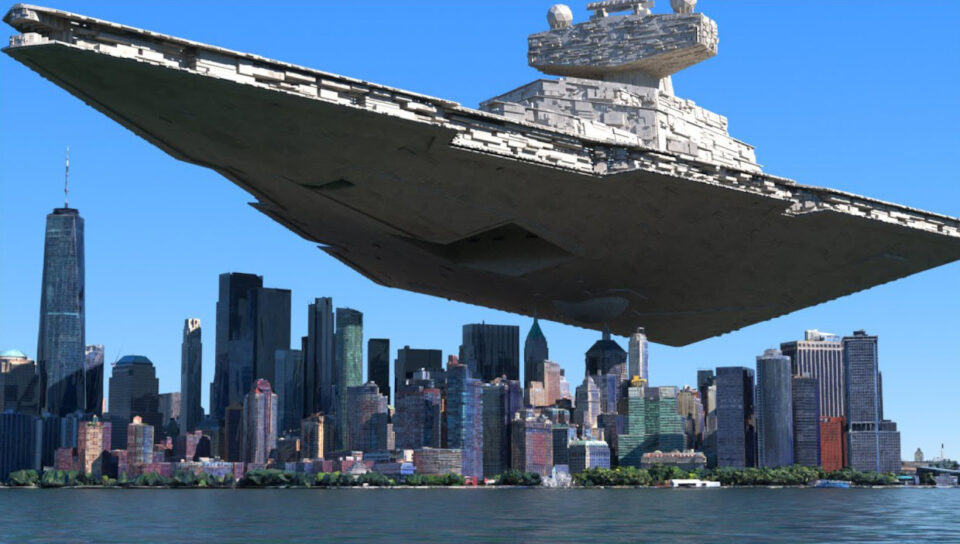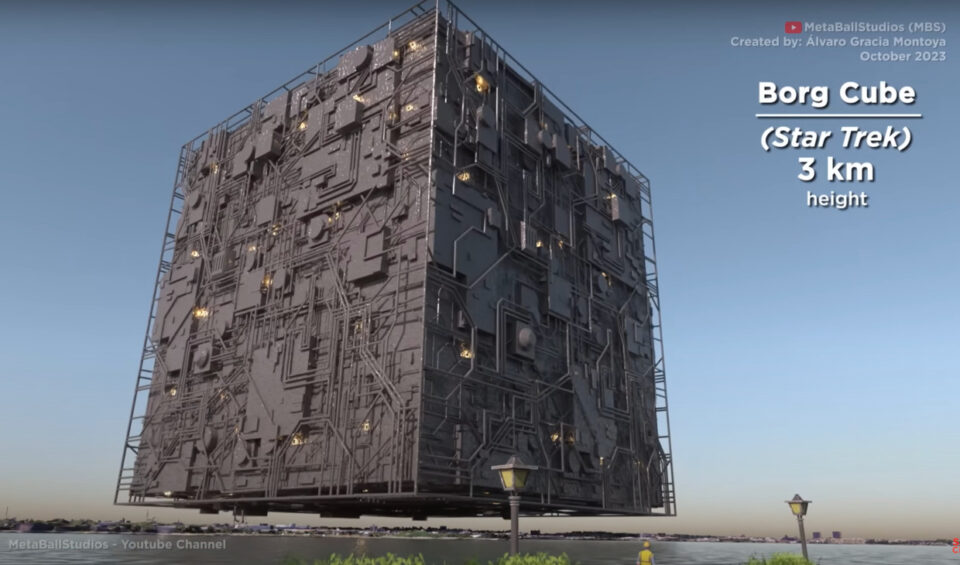
Created by Youtube channel MetaBallStudios, this is a 3D visualization of what various spacecraft from popular sci-fi franchises would look like as viewed by a person standing in Jersey City and facing lower Manhattan. I’ve stood right in that exact same spot before. Granted, there weren’t any spaceships hovering in the sky, but I was eating one of the best street hot dogs I’ve ever tasted.

You get a glimpse of the Star Wars X-Wing, E.T. Ship, D77H-TCI Pelican from Halo, Martian’s Spaceship (Mars! Attacks), Moon Rocket (Tintin), USSC Discovery One (2001: A Space Odyssey), Space Battleship Yamato, Mothership (Close Encounters of the Third Kind), USCSS Covenant (Alien Covenant), Battlestar Galactica, Destiny Ascension (Mass Effect), Avatar (EVE Online), City Destroyer (Independence Day), High Charity (Halo), and more.
Honestly, I expected the Borg Cube to be even more giant. I’m not sure exactly how big I imagined they were, but definitely larger than 3km square. I mean Death Stars were about 160km in diameter — they would dwarf Borg Cubes! Or at least they would if they didn’t keep getting blown up by the rebels.
[via TechEBlog]